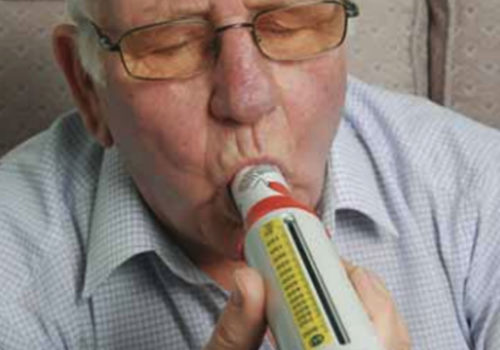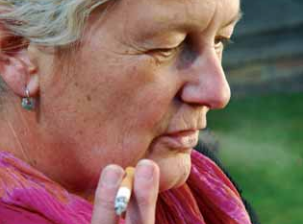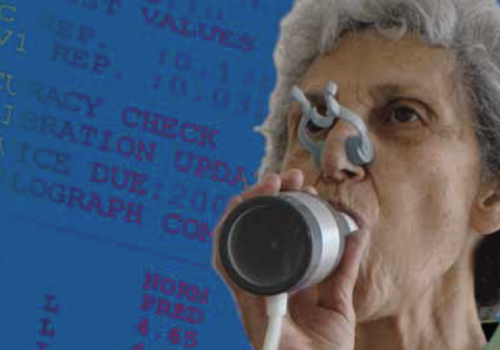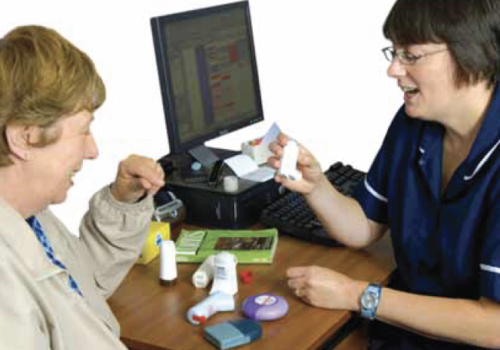Breathlessness is a very common problem in the patients we see in general practice, and
there is a range of possible causes. In this article – the first in a series of three looking
at how to diagnose what’s wrong with a breathless patient – we explore how to
distinguish between two of the commonest respiratory causes of breathlessness,
asthma and chronic obstructive pulmonary disease.
P-values: what are they?
P-values are commonly included in the results sections of randomised controlled trials (RCTs), but what is a p-value and
how should it be interpreted?
How to care for patients with end-stage COPD
Practice nurses often get to know their patients with chronic obstructive pulmonary
disease (COPD) very well. Over the years, they have attended for reviews, flu injections
and when they have exacerbations. Nurses get to know their families as well as the
patient, and it can be hard to observe the inevitable deterioration as the condition
progresses. This article will outline some of the key issues for practice nurses when their patients
start to have frequent hospital admissions or cannot attend the surgery for reviews. Has their
condition become palliative, and what can practice nurses contribute to their care?
Editorial
The year is racing by – autumn is already upon us! It’s a time which fills me
with great expectations, with memories of starting a new academic year at
school or university. Many of you may still be experiencing this through your
children! I love the feeling of opening a clean ‘exercise book’! Some of you
may even be contemplating starting up studies again. The Education for Health
graduation ceremony is being held in October; it is one of the most thrilling
events in our academic calendar – seeing the smiles on the faces of the
mature graduates and their families as they attain awards that they never felt
would be possible! Let them be an inspiration to you all; it is never too late to
start! Our team here at Education for Health would be delighted to discuss any
programmes you might be interested in.
Lung Cancer: Diagnosis and Therapy
There are over 37,000 new cases of lung cancer each year in the UK and it is the most common cancer in males and second most common after breast cancer in females. The role of the multidisciplinary team is essential in the management of these patients and it is important for all members of the team to know the signs to look for and actions to take in cases of suspected lung cancer. This article reviews the current methods of diagnosis and treatments available for lung cancer and the role of the primary healthcare professional.
What is a ‘double-dummy’ trial?
We continue our series of articles on research concepts by explaining what ‘double-dummy’ trials are and why researchers
use them to compare medications that are delivered using different types of inhalers.
The 30-second intervention for smoking cessation
Primary healthcare staff are in an influential position when it comes to helping people to
stop smoking. They clearly understand the dangers of smoking and have access to
excellent smoking cessation services. In addition, the recent public smoking legislation
has given many smokers added motivation to stop (See Prevention in Practice, BJPCN
December 2008). However, there is much still to be done. This article recommends an easy and
effective brief intervention for primary healthcare professionals to help patients towards the
most effective way to stop – support and pharmacotherapy.
Oxygen Therapy for COPD: How to use it Safely
Oxygen therapy for patients with chronic obstructive pulmonary disease (COPD) has
recently been hitting the headlines, because major changes in its supply – using
independent contractors – introduced last year initially caused problems in some areas.
In this article, we review why some patients with COPD need oxygen therapy, when it
should be used and how to use it safely.
How can I measure airways inflammation in asthma?
Asthma affects more than 5 million
people of all ages in the UK today.
The vast majority of asthma is
diagnosed and managed in primary
care and most people with asthma rarely need
to see a hospital specialist. Until recently it
has been difficult to measure the level of
inflammation seen in asthma accurately in
general practice. However, new techniques
such as exhaled nitric oxide measurement are
now available for use and this article provides
GP and nurse perspectives on the potential of
such techniques in primary care.
Diagnosing COPD: Putting the jigsaw together
Diagnosing chronic obstructive pulmonary disease (COPD) can be complex and requires
considerable clinical skill. It is rather like putting together the pieces of a jigsaw
puzzle. But don’t despair. In this article, we take you through the key steps. A careful
history, particularly in smokers or ex-smokers who complain of breathlessness,
followed by clinical examination may indicate possible COPD. Further steps must then be taken
to exclude other causes of respiratory symptoms and spirometry is essential in diagnosing
airflow obstruction, which may help to confirm the diagnosis of COPD.
Has The UK Smoking Legislation Improved Our Health?
Between March 2006 and July 2007 smokefree legislation was introduced in Scotland, Wales, Northern Ireland and England, making virtually all enclosed public places and workplaces smokefree. Building on the experience of several other countries, the laws and regulations were designed to protect the health of workers and others from the negative consequences of breathing secondhand tobacco smoke. This article examines the impact that the legislation has had so far and provides guidelines for encouraging patients to stop smoking.
What do Patients Want from Asthma Therapy?
More than half of people with asthma in the UK have inadequate symptom control,
despite the range of effective therapies now available. Rather than blaming
patients when they fail to take their medications as prescribed, we need to
examine the way we conduct asthma consultations and ask whether we are failing
to meet the needs of individual patients. How can we gain greater understanding about what
people with asthma want from healthcare professionals and treatments, so we can achieve a
more patient-centred approach to care?

























